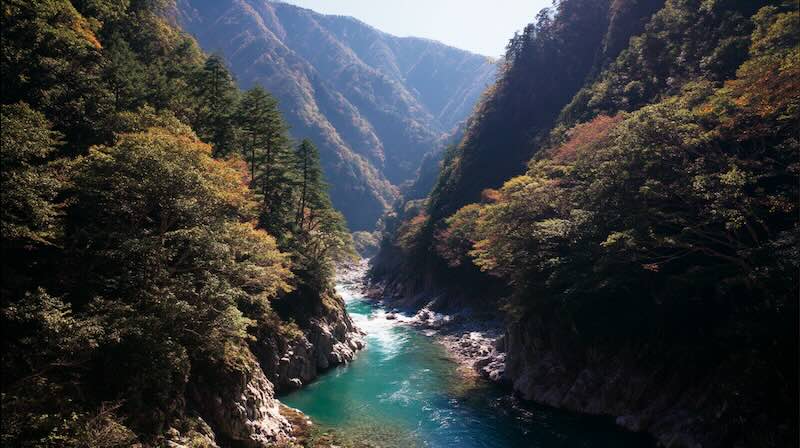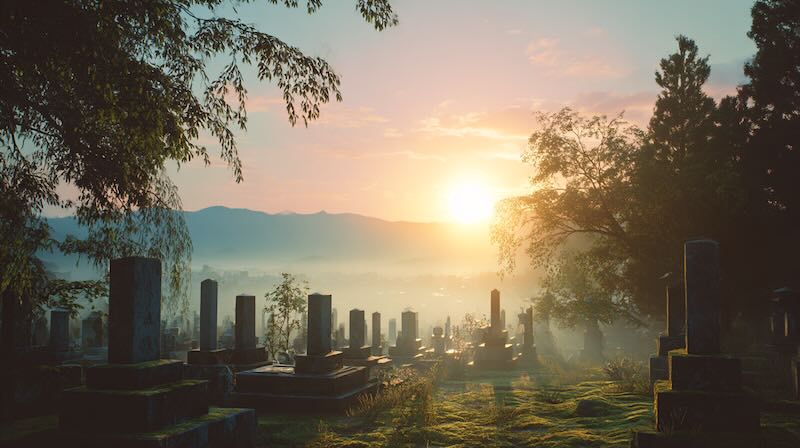The Grand Canyon draws millions of visitors each year with its vast expanse and dramatic cliffs. But Japan, though far less famous for its canyons, is home to some of the world’s most breathtaking gorges. These natural wonders remain largely unknown to international travelers, even if they are popular among Japanese tourists.
If you love the awe of geological grandeur, Japan’s hidden canyons might surprise you—offering not only natural beauty but also rich cultural context, hot springs, and seasonal magic. Unlike the Grand Canyon, which overwhelms with scale, Japan’s gorges invite a slower, more intimate connection with nature.
Japan’s Hidden Canyon Treasures
1. Kurobe Gorge (Toyama Prefecture)
Known for its steep cliffs, emerald waters, and scenic railway, Kurobe Gorge is often called “Japan’s most dramatic gorge.” A ride on the Kurobe Gorge Railway in autumn feels like traveling through a painting. The emerald-green river winds through a granite valley, and steam rises from secluded hot springs nestled in the cliffs.
Access: From Toyama City, take the Toyama Chiho Railway to Unazuki Onsen Station, then board the Kurobe Gorge Railway.
2. Iya Valley (Tokushima Prefecture)
Suspension bridges made of vines, deep valleys, and remote mountain villages give Iya Valley a mythical aura. According to legend, samurai from the defeated Heike clan sought refuge in this hidden ravine. The steep gorge walls and misty forests evoke a sense of timelessness.
Access: From Tokushima City, take a train or highway bus to Oboke Station, then a local bus into the valley.
3. Osugidani (Mie Prefecture)
Sometimes compared to Yosemite, Osugidani features towering cliffs, pristine rivers, and dramatic waterfalls such as the Nanatsugama-Godan Falls. Hikers pass through narrow ridges, mossy forests, and suspension bridges. Its rugged terrain made it almost inaccessible until modern trails were developed.
Access: Reachable by bus or car from Owase Station on the JR Kisei Line.
4. Shosenkyo (Yamanashi Prefecture)
Easily accessible from Tokyo, Shosenkyo Gorge is famous for its soaring granite cliffs, crystal-clear Arakawa River, and seasonal scenery. In autumn, the gorge ignites with maple reds; in spring, cherry blossoms grace the canyon walls.
Access: From Kofu Station in Yamanashi, take a bus to Shosenkyo-guchi, then walk along the gorge trail.
Cultural and Seasonal Layers
Unlike the Grand Canyon, Japan’s gorges are often intertwined with mythology, pilgrimage routes, and seasonal traditions. Many are near temples, hot springs (onsen), or traditional ryokan inns. Hiking these gorges often includes encounters with local culture—soaking in an open-air bath after a long hike, eating regional specialties, or even staying in a centuries-old inn.
In fall, the canyons become fiery with red maple leaves; in spring, pink cherry blossoms adorn their banks. In winter, some transform into snow-covered dreamscapes.
Travel Tips for Visiting Japanese Gorges
- Best seasons: Autumn (mid-October to November) and Spring (April-May)
- Etiquette: Stay on trails, avoid loud voices, and respect any religious sites or natural formations
- Access: Some areas are remote and require local bus or train transfers, but this adds to the sense of discovery
Why They Remain Hidden
Though some of these gorges are well-known to Japanese travelers, they remain under the radar internationally. Limited English-language promotion, lack of signage, and remote access make them hidden gems for global visitors. For instance, while the Grand Canyon welcomes over 6 million visitors annually (per U.S. National Park Service), Kurobe Gorge sees a fraction of that—mostly domestic tourists.
More Than Just a Scenic View
While the Grand Canyon inspires awe through its monumental scale, Japanese canyons offer a different kind of experience: intimacy. You can walk through the landscape, touch ancient stone, hear birdsong echo off mossy walls, and immerse yourself in a multi-sensory journey. Many of these gorges come with stories—folk legends, samurai myths, spiritual practices—making each hike feel like an exploration through both nature and culture.
Summary
Japan’s canyons may not match the Grand Canyon in scale, but they offer something equally valuable: intimacy, cultural depth, and seasonal beauty. For those looking beyond tourist checklists, these hidden gorges invite a quieter, richer form of exploration.
Are you ready to discover Japan’s hidden natural wonders? Start planning your journey today.

